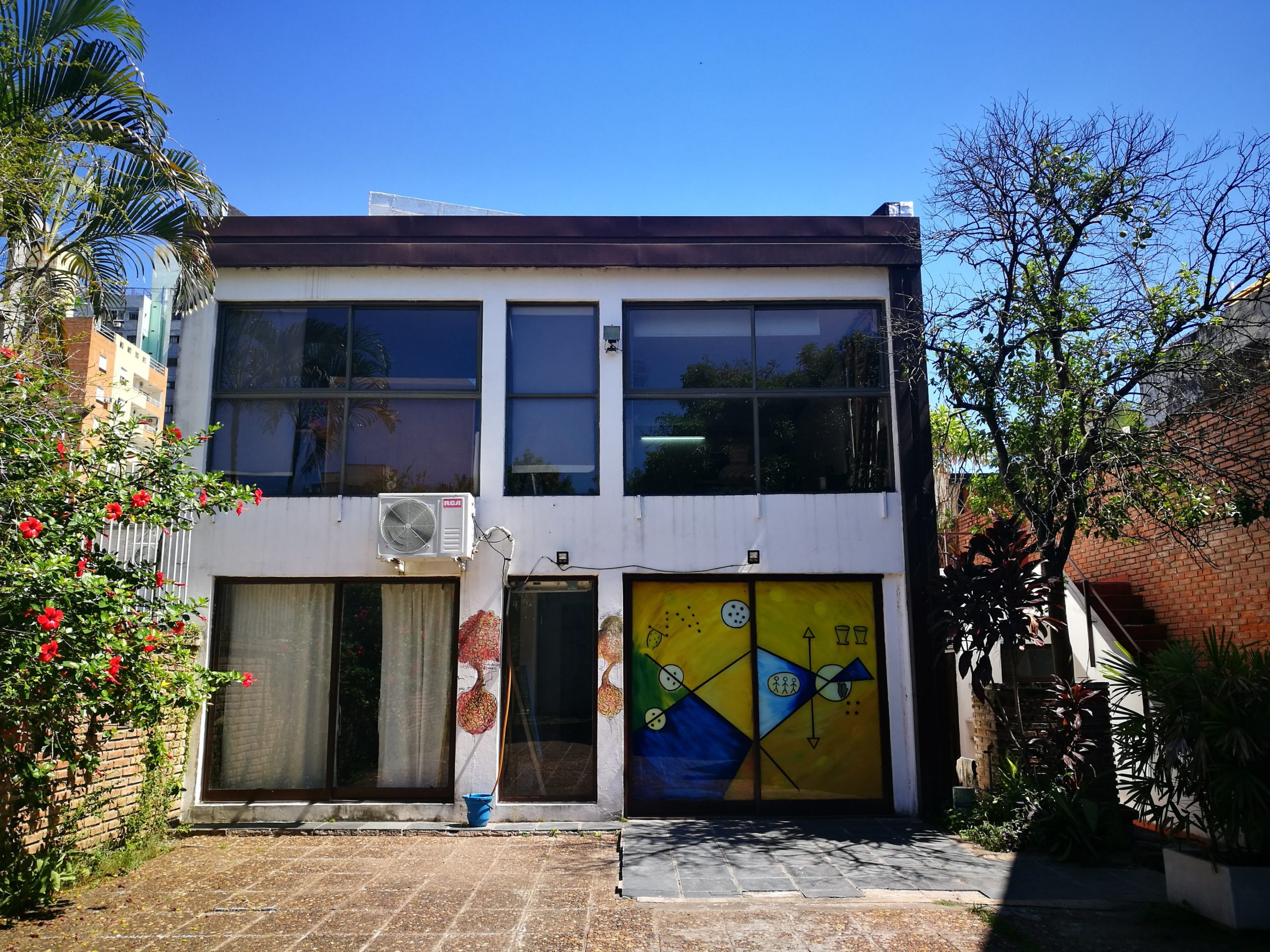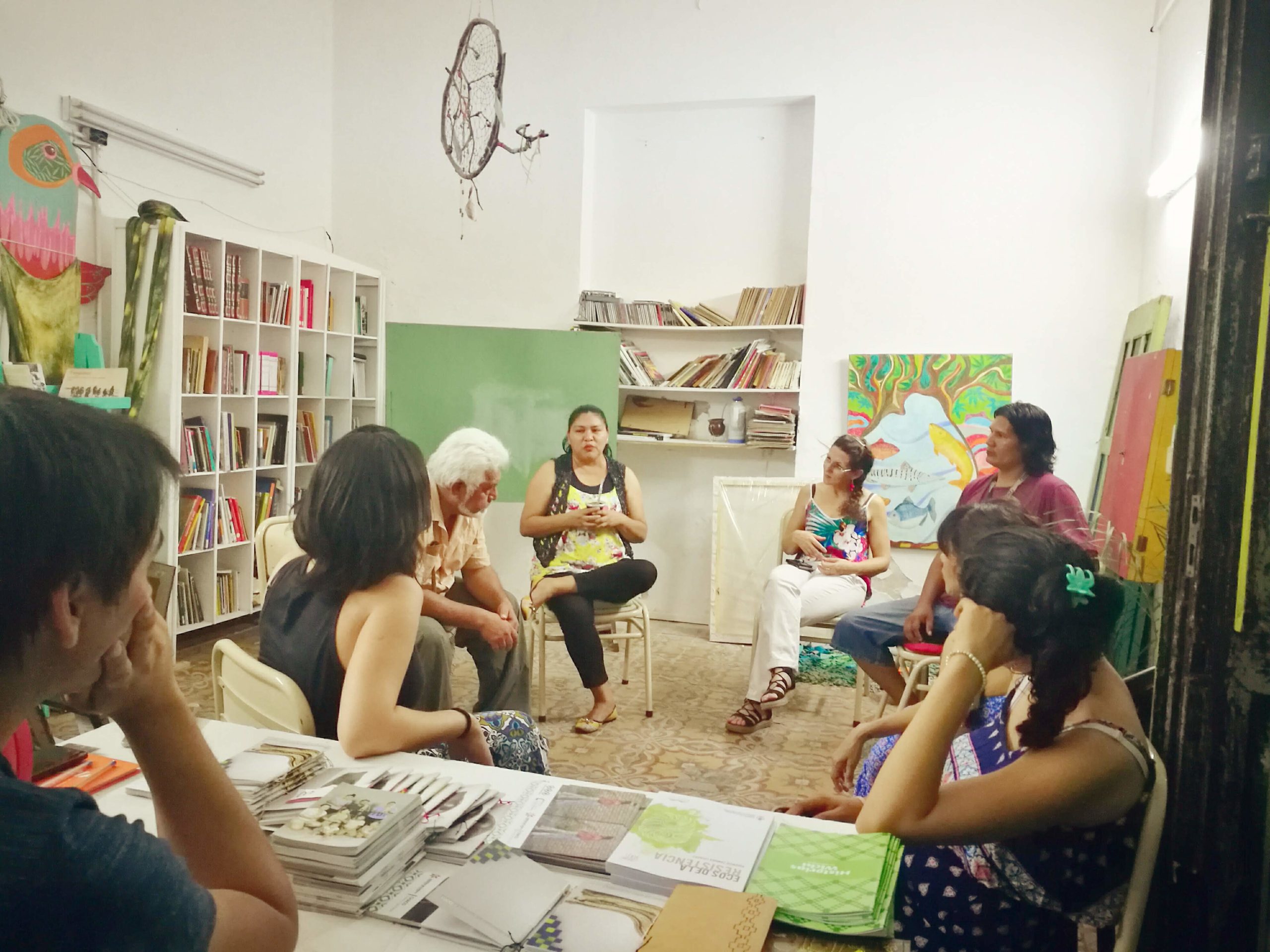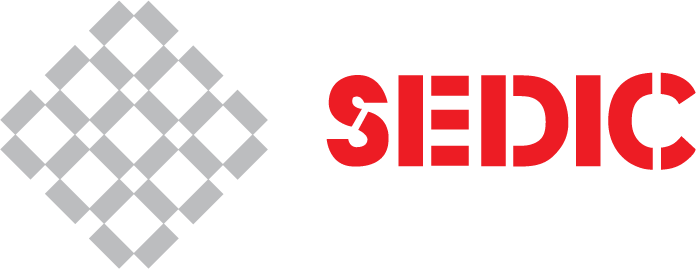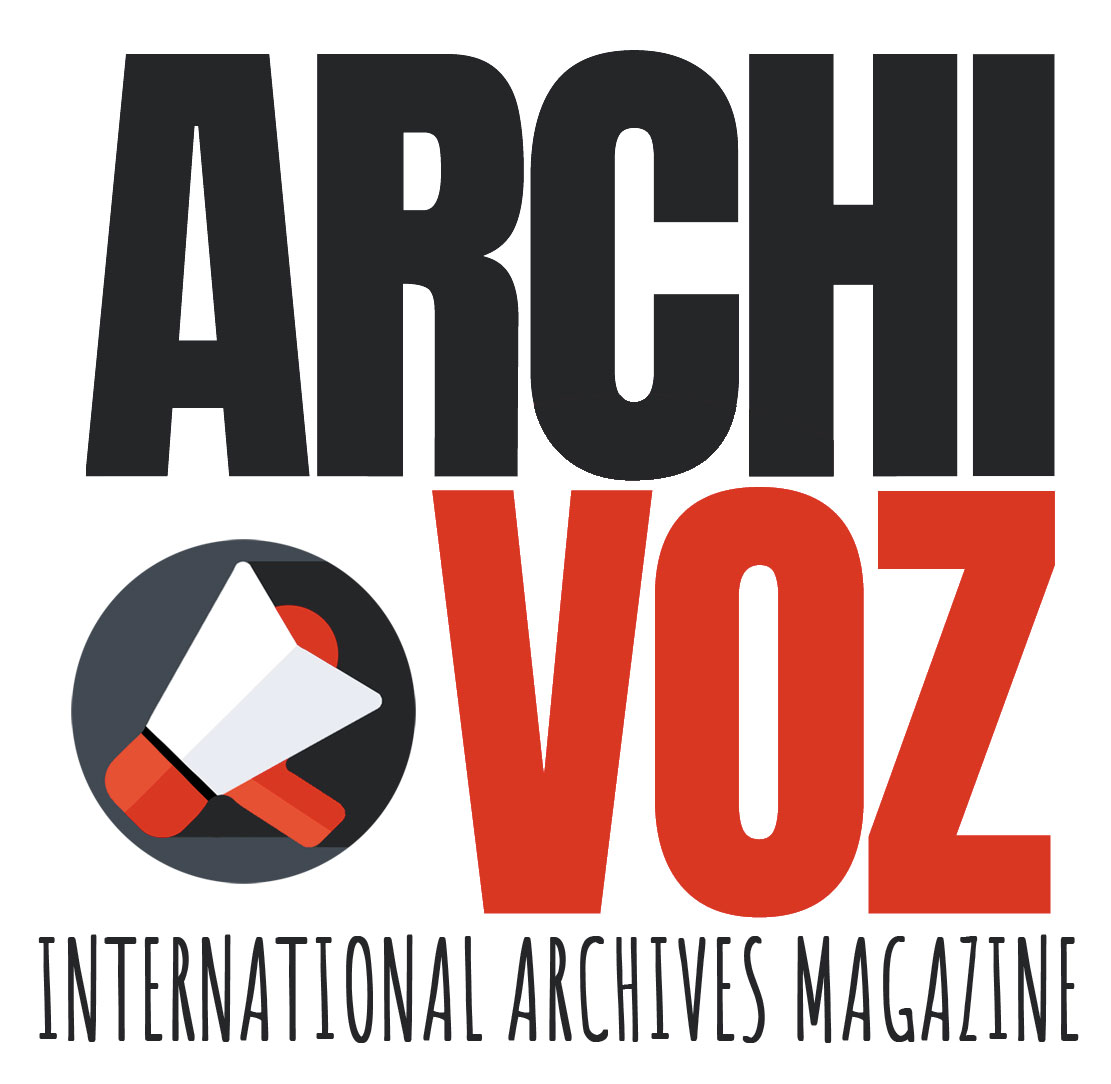In this interview, we chat with Angie Cervellera, from Wikimedia Argentina, and Shailili Zamora Aray, from the No’lhametwet Indigenous Documentation Center in Resistencia, in the province of Chaco, Argentina, about the importance of creating spaces, both digital and physical, for indigenous and regional voices, and how these two projects seek to engage with different stakeholders and encourage them to participate in this effort.
(Archivoz) How was the No’lhametwet Indigenous Documentation Center founded? What is the meaning of its name, and how does it relate to your institutional mission? How many indigenous people groups are there in Argentina, and how many are represented and/or participate in the Center’s activities?
(Shailili Zamora Aray) The No’lhametwet Indigenous Documentation Center is part of the Cultural Institute of the Province of Chaco, and grew out of the Cultural Program for Indigenous Peoples of the Province of Chaco. The program includes members from the three recognized indigenous people groups in Chaco — the Qom, the Mocoi, and the Wichí — as well as a number of non-indigenous members. About five years ago, the members of this program came up with a plan to start a library. They reached out to my colleague Laura Perez, who is Qom, and to me, as library science students, and presented their idea to us, and together we began the process of devising and setting up the Documentation Center. We realized very quickly that a library alone would not be enough to give full expression to indigenous voices, so we decided to proceed from a variety of angles: not just a library, but also an archive, an extension service, and a branch dedicated to academic research.
Our name—No’lhametwet—means “the place of our word” in the Wichí language. “Wet” means “place,” “lhamet” means “word,” and “no” means “ours.”
There are 35 officially recognized indigenous people groups in Argentina. Within Chaco itself, there are five that are represented among the population, but only the three previously mentioned groups enjoy official recognition. As for the rest, we have done our best to speak for them within our catalog. Our collections include a great deal of information on other indigenous communities both in Argentina and throughout the world, including materials in Spanish, English, and various indigenous languages.
(Archivoz) In the case of Wikimedia Argentina, how and when did the project begin, and what is its purpose?
(Angie Cervellera) I became involved in Wikimedia Argentina relatively recently, about a year and a half ago, but the project itself began around 2007. It is the local chapter (or subsidiary) of the Wikimedia Foundation, based in the United States. Basically, the raison d’être of this project springs from the way in the Internet was originally conceived, as a free, decentralized space. You’ve mentioned decolonization; right now we are focused heavily on decolonizing the Internet, given its strong homogenizing tendencies.
Wikimedia Argentina includes a variety of programs. I work specifically in the area of culture and open knowledge. “Open” is a word we use often at Wikimedia Argentina: by this we mean an absence of barriers to knowledge. There are no technological barriers, beyond — I clarify — the barrier represented by lack of access to the Internet or a computer, which in this country is fairly common. Much of the Argentine territory experiences difficulties with connectivity or access to the necessary technology. We always keep this in mind in our work.
“Open” also implies not asking for any sort of payment in exchange for access. Financial barriers to research are common; Wikimedia Argentina works against this custom, seeking to make knowledge open and publicly accessible, in ways that would allow it to circulate freely.
Regarding open culture, what we are trying to enable is the propagation of different voices, which are outside the mainstream, official account of history or cultural development. We refer to these voices as “underrepresented,” specifically in terms of the Internet. The idea is to partner with spaces like the Indigenous Documentation Center, hold workshops, and to learn from them — we seek also to understand other ways of working. In addition, we work to digitally preserve the content of these projects. We also give training workshops on intellectual property, which is something very important to us at Wikimedia Argentina.

No’lhametwet Indigenous Documentation Center
(Archivoz) How did Wikimedia Argentina become associated with the IDC? What role do you play in relation to the work that is done there?
(A.C.) Our first contact came about during an event organized by Wikimedia Argentina that focused on diverse experiences in the field of knowledge dissemination, access and archival organization, under the blanket theme of underrepresented identities — women, LGBTQ+, indigenous communities. We also focused on the issue of human rights, which obviously applies to all these categories. In the particular case of Argentina, we were focused on the exercise of memory and the idea of justice as related to the dictatorship [National Reorganization Process, 1976-83]. We had several speakers who spoke about archival collections that perhaps were not so well known and that touched on topics that are very socially relevant. From there, we reached out to the No’lhametwet Center, because their presentation impacted us especially and we were very interested in the work they were doing.
(S.Z.A.) Since that first moment of contact, we’ve been thinking about what sorts of projects we could develop together. We looked at various ideas related to the different programs underway at Wikimedia Argentina; of these, Wikipedia was the one that attracted us the most, so in coordination with the Qom Chelaalapí Choir and with indigenous students from the university, we decided to organize a series of workshops and create Wikipedia articles related to indigenous communities. Specifically, we created articles about the Qom Chelaalapí Choir, which is an indigenous choir that is very important to the musical history of Chaco, and whose existence is fundamental for the Qom people. We also created articles about the IDC and other topics related to indigenous peoples. In the process of creating these articles, we saw firsthand the lack of information — or of correct information — in Wikipedia related to indigenous peoples. When we tried to link our content, there was no way to do it; we were also unable to include the necessary references.
(A.C.) To clarify, Wikimedia projects are freely accessible and anyone can edit them, but edits and file uploads are nonetheless governed by a set of rules. Something Shailili and I encountered in relation to some photographs of the Choir that we attempted to upload was that, while these photographs are part of the archive, they are not covered by an explicit transfer of rights. This isn’t an experience specific to this archive; it happens in many cultural institutions. Donors give their materials to an archive but perhaps do not sign official agreements, leaving it unclear to what extent they’ve ceded their rights. In order to upload images to Wikimedia projects, they must be copyright-free — either in the public domain or released under Creative Commons licenses. In the end, we could not include those photographs because we did not have the supporting documentation.
Also, much of the information included in the Center’s archive is based on oral transmission, so both in drafting Wikipedia entries and when uploading material related to native peoples, we are often faced with a lack of written documentation, which is a very necessary part of Wikimedia projects. We do not agree with this demand for documentation, and we are working to change it, or to see how the available records can be used as sources. There is a lot of work we can do together that goes beyond just the Qom culture within Chaco to include all the indigenous communities who want to participate in similar projects. It’s a common problem.
(Archivoz) In his 1999 book Manifest Manners, Anishinaabe cultural researcher Gerald Vizenor adopted the term “survivance” (a modification of the word “survival”) in reference to indigenous cultural preservation efforts, defining it as “an active sense of presence, the continuance of native stories, not a mere reaction, or a survivable name.” What are the implications of this concept for the work you do?
(S.Z.A.) I’ve been thinking a lot about the date you mentioned. At one point all the indigenous peoples were focused on survival, and they designed different strategies for doing so. But a moment arrived in the history of indigenous peoples in which it was no longer enough to just survive, because a lot of knowledge related to their cultures was being lost. We believe that as members of indigenous communities we have to exercise our rights. Indigenous peoples, as set forth in international conventions and national and provincial legislation, have the foundational right to self-identify as members of indigenous people groups and to preserve their culture under conditions of their own devising, which they define, culturally speaking, as the right to remain. This relates, for example, to relationships to the land, health systems, and rights in general.
Another issue we seek to address at the Indigenous Documentation Center has to do with innovation. It is true that we must preserve our culture, but at the same time we are immersed in this society, at this time, and this requires certain adaptations, not only in terms of economics, but also in areas such as language. It is necessary to create new words to define the things that are being incorporated, such as cell phones, computers, the Internet itself. This requires very rapid innovation on a cultural level, while at the same time we attempt to maintain our own identity as members of indigenous people groups. The Documentation Center deals with a mixture of both; part of our job is to identify these possibilities and to assist members of indigenous communities as they navigate this complexity.

Sharing stories of cultural diversity
(Archivoz) As a teenager in Argentina, I was an avid reader of Patoruzú and Patoruzito comics. It was only later, as an adult, that I began to understand the extent to which these stories reflect a European colonialist imagination — the Tehuelche large landowner whose hobby is dealing with bad guys with the assistance of his buddy Isidoro, the white playboy from the big city…and that’s just for starters. In your opinion, what is the image of the indigenous person in the Argentine popular imagination, and in what ways does the No’lhametwet Indigenous Documentation Center seek to vindicate that image through its work?
(S.Z.A.) I don’t think there is one monolithic image of native peoples in the Argentine imaginary. I think it varies from province to province. There is a wide spectrum, from those who think that indigenous peoples do not exist to those who think that they exist only in the distance, such as in the jungle or in the mountains, or in other countries. There are those who associate them more with welfare, with roadblocks and protests, or with those who need government assistance or charity. There are also those who consider that the existence of indigenous peoples is fundamental to the existence of human life itself, in terms of the protection of forests and land, botanical knowledge–knowledge that science has struggled to accumulate, but that indigenous peoples maintain and continue to preserve, relationships with nature they continue to share, that have allowed many green spaces to survive that otherwise might not have.
The Center seeks to express our right to exist as human beings, that we have the same abilities, that we can be professionals and practice our professions while at the same time remaining indigenous, even if we use cell phones or computers. We also have the ability to speak in many languages, not only in our own but also in Spanish, English, French, and many more. This is something fundamental: even now the image widely persists that if you speak Spanish then you are no longer indigenous, or if you use cell phones or other technological objects you are somehow abandoning your culture. We are trying to reclaim ownership of all our capabilities.
(Archivoz) In 2019, the Center joined the Coalition for the Eradication of Racism in Higher Education. Can you tell us a little about this project? Obviously, it is an issue very relevant to the indigenous situation in Argentina (and around the world), but as an issue that spans a wide variety of demographic groups – both racial and social – how can the No’lhametwet Center contribute to this conversation globally and in reference to all the impacted groups?
(S.Z.A.) The Coalition brings together various institutions of higher education as well as several indigenous organizations, all of which bring their own experience to bear on the project. This is closely related to my previous answer: in order to be professionals, we have to complete a university education, and this requires a great degree of adaptation—for everyone, but especially for indigenous peoples. It implies separation. We as students talk a lot about these topics; it’s not just the story of a particular individual but of many, not only of this generation but also of previous ones, who could not finish their own education but support their children so they can advance, enroll in universities, and be professionals, and so they can maintain relationships with their communities despite the distance.
For this reason, we at the Coalition and at the Documentation Center work closely with students: we want to help maintain these spaces for dialogue and to support them in their personal continuity, so that they don’t just become teachers or lawyers but so they can produce their research from the perspective of their communities and help to achieve a greater balance in that which is written of indigenous peoples using their own voices, out of their own experience and knowledge of their peoples. The Coalition is very important, because many countries are undergoing this process of change and adaptation, a process in which institutions of higher education play an important role. We hold meetings where we share what we’ve learned and discuss new networks that can be leveraged and other institutions that can join in so that our work can continue. There is the Coalition itself, which exists at the institutional level, and then there is our network of collaborators, to which we are always trying to add new members who can represent indigenous peoples.
(Archivoz) Returning to the partnership between Wikimedia Argentina and the IDC, why do you think it is important to a create a space specifically for indigenous and regional voices in the work of digital creation?
(A.C.) At the moment, our version of Wikipedia is in Spanish only, but I think it would be great if we could expand that to include other languages. There is a Mapuche Wikipedia, for example. However, in order for that to happen there are many steps that must be taken beforehand: the encyclopedia would enter an incubation phase in which we would begin to write entries, and as Shailili pointed out, not everyone who speaks certain languages can write them. This is also a complicated issue. Basically, it is important to give people a voice so that they can speak from their own communities.
In this process, some things will be up to us, and some will not. Internet accessibility is a topic that needs to be addressed in a number of different contexts. Where workshops can be held, we try to connect with students. There is an association called Latin America Speaks that makes computer keyboards for indigenous languages; that’s great. They are digital creators; in the digital world, it is necessary to join forces across many different initiatives in order to create a network of collaborators, so that we can push together for ever more representation of indigenous peoples springing from within their own true identity.
In one of our first conversations with Shailili, we looked at an article about the Qom — who are also called the Toba people, which, as Shailili will tell you, is a derogatory term — and the photograph used to depict them as a community did not reflect very well who they really are. It made us wonder how many of us as young people have absorbed stories and images that are not truly representative from the school textbooks used in official curricula. Ideally, we want to try and counter these false positions.
(S.Z.A.) It is our goal to create digital content in reference to indigenous peoples, but in terms of their current situation, not governed by the idea that these peoples remain immutably fixed in time, but acknowledging that they change, that we grow and incorporate new ideas in different ways. There are many indigenous content creators who prefer to remain independent, but we need a blanket and open organization that allows them the space to express themselves and collaborate from their own points of view. With Angie’s help, and that of the open culture program, these spaces have been developing, and this allows us to continue working.
Header image: Workshop with Ema Cuañeri, a Qom musician.
Images used by permission of the No’lhametwet Indigenous Documentation Center.
Interview conducted by: Vance Woods



